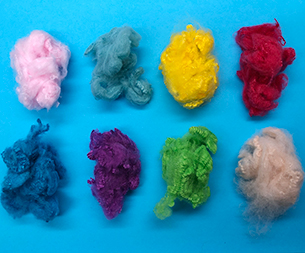Guangdong textile garment digital transformation has a clear road map. A few days ago, the Guangdong Provincial Department of Industry and Information Technology issued the Guidelines for the Digital Transformation of the textile and Garment industry in Guangdong Province. By 2025, the integration level of the two aspects of the textile and garment industry in the province will reach more than 60%, and more than 70% of enterprises above designated size will reach more than 70%. Meanwhile, a number of 5G fully connected factories, smart manufacturing demonstration factories and excellent application scenarios will also be cultivated in the textile and apparel industry.
The consumer goods industry is an important force driving economic growth, involving clothing, food, housing, transportation, shopping, entertainment and other fields. In the opinion of experts, in order to realize the fundamental transformation of products into brands and transform quality advantages into brand advantages, it is urgent to play the role of amplification, superposition and multiplication of digital technology to further enhance the added value of products and brand premium.
"Clothing clothing is a non-standardized product, the style, structure and production logic are so different, it is difficult to form a unified standard in technology. Enterprises that do digital research and development often look at problems from the perspective of the Internet, and their understanding of the clothing industry and human engineering structure still needs to be deepened." In recent years, Chen Zhiguang, deputy general manager of Guangzhou Exception Clothing Co., Ltd. deeply felt the necessity and urgency of digital transformation, but also deeply felt the difficulties faced by the digital transformation of textile and clothing industry.
To this end, the transformation guidelines focus on the textile and garment industry research and development, design, production, management, public service and other key links of digital technology application put forward specific guidelines.
For example, it guides the cluster to build an industrial Internet platform serving the regional textile industry, carries out data collection, mining and innovative application, digs and extracts application scenarios and corresponding solutions suitable for the characteristics of the textile and garment industry and solves the practical problems of the industry, builds the industrial Internet platform system of the textile and garment industry of the industrial cluster, and builds 3 to 5 demonstration bases for the industrial Internet of the textile and garment industry.
In the aspect of digital transformation of the design department of garment enterprises, it is proposed to set up a number of enterprise-level and prefecture-level industrial design centers, and establish a number of industrial design centers above the provincial level. In terms of business model innovation, new concepts such as "new retail" will be supported, and the advantages of experience, interaction and spatial functions of physical market platforms will be brought into play to boost the real market economy. At the same time, RFID chips, QR codes, bar codes, cards and other digital technologies are used to establish textile and garment product cognition system and after-sales service system.
Guangdong will also promote textile and apparel enterprises to strengthen the deep cooperation with textile and apparel stores, distributors, e-commerce platforms and other platforms, use all kinds of platform data banks, analyze and excavate consumer group portraits, incubate and cultivate popular products, so that enterprises from "what is produced to sell" to "what is needed to produce", to create a unique and influential network of new consumer brands. Fully excavate the data resources of textile and garment exhibitions in Guangzhou, Shenzhen, Shanghai, etc., to provide support for exhibition recruitment, investment, service and industry policy formulation.
In view of the characteristics that private enterprises in the textile and garment industry are mainly small and medium-sized enterprises, the transformation guide starts with the link of the urgent need for digital transformation of small and medium-sized enterprises, proposes to develop low-cost, lightweight, platform-type, quick effect digital solutions suitable for the needs of small and medium-sized enterprises, promotes enterprises to be on the platform, supports research institutions to build a public service platform for them.
Guangdong will also help enterprises with diagnostic consulting, solution application and other services in digital transformation. While promoting the digital transformation of small and medium-sized enterprises, we should strengthen the research on industry digital development and promote the development of relevant standards for industry digitalization.
- Unveiling the outstanding proper
- The 11th China International Sil
- How does polypropylene staple fi
- The 2025 International Textile F
- The application of polypropylene
- Cost pressure has pushed up yarn
- How to choose high-quality polyp
- New quality productive forces ar
- What are the applications of pol
- Trump announced a 100% tariff on
- Markets
- Automotive Products
- Nonwoven Lining
- Geosynthetics
- Liquid Filtration
- Apparel and Textiles
- Hygiene Products
- Building and Construction
- Other Markets
- Contact Us
- Contact Haibang





